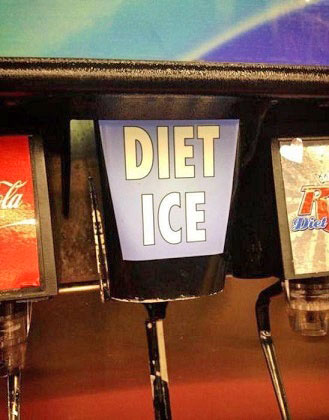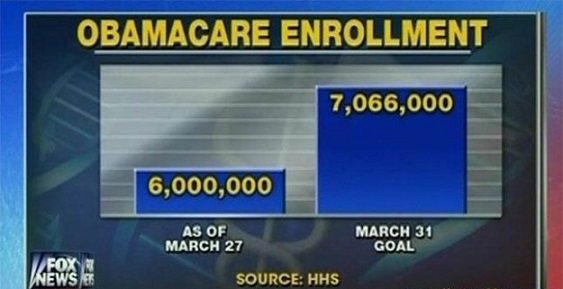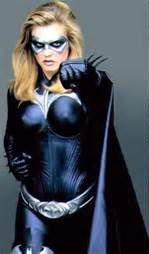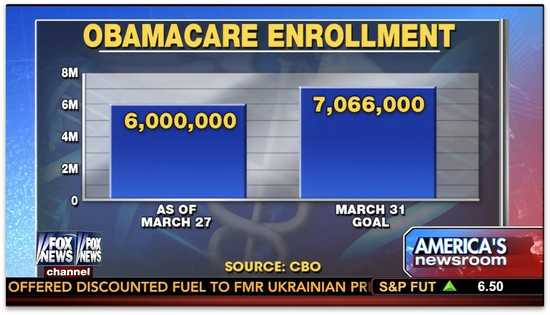Previous Month | RSS/XML | Current | Next Month
WEBLOG
May 31st, 2014 (Permalink)
Blurb Watch: Korengal
I've said it before but I'll say it again: Beware the one-word blurb! It's just too easy to find a single adjective in a negative or middling review that taken out of context gives a false impression. As an example, see the following single-word blurbs from an ad for the new documentary Korengal. The Entertainment Weekly review gives the movie only a "C+" rating, while the Post gives it two-and-a-half stars out of four, which is about equivalent to a C+.
| Quote | Context |
|---|---|
| "PASSIONATE!"
-Farran Smith Nehme, NEW YORK POST |
The film is passionate, but not exactly revelatory. |
| Source: Farran Smith Nehme, "Passionate ‘Korengal’ reveals psyche of soldiers", NEW YORK POST, 5/28/2014 | |
| "SHATTERING!"
-Joe McGovern, ENTERTAINMENT WEEKLY |
Interviews with the men, shot in prying close-ups, are shattering, yet the film is so noble and apolitical that it’s unchallenging. |
| Source: Ad for Korengal, The New York Times, 5/30/2014, p. C12 | Source: Joe McGovern, "Korengal", Entertainment Weekly, 5/21/2014 |
May 29th, 2014 (Permalink)
A Bookshop Puzzle Contest
In the last month, all of the customers of Ye Li'l Ole Bookshop on the Corner bought either a book, magazine, or newspaper. Use the following six facts about the customers' purchases to solve the puzzle:
- 34% of those customers bought at least one book.
- 58% of customers did not purchase a magazine.
- 7% of customers bought only books.
- The percentage of customers who purchased just a magazine was equal to the percentage who bought both a book and newspaper.
- Only 5% of the shop's customers purchased all three types of publication.
- The percentage of customers who bought just a book was one percentage point greater than the percentage of those who purchased both a book and magazine.
What percentage of customers bought both a newspaper and magazine but no books?
If you can answer the above question, email me the answer. The first person to submit the correct solution will receive a coupon for a free copy of cognitive scientist Luc P. Beaudoin's new book Cognitive Productivity: The Art and Science of Using Knowledge to Become Profoundly Effective, which is an e-book that you can download in a number of formats for different types of reader. Any runners-up will receive an honorable mention on this honorable weblog.
We have a winner!: Congratulations to Dan Keys, who was the first to submit the correct answer. Click the link below to see the solution.
Solution to the Bookshop Puzzle
Update (3/5/2017): When I wrote the above puzzle, I did not realize that there is an ambiguity in its wording. As a consequence, there are two distinct ways of solving the puzzle, but fortunately each way leads to the same answer to the posed question! This was not intentional, as much as I'd like to claim it was. However, I've decided not to remove the ambiguity; instead, I'm issuing an additional challenge to intrepid puzzle-solvers: Solve the puzzle in both ways by discovering the ambiguity. You'll know you've done so when you find two different answers to the following question:
What percentage of customers bought a newspaper but no book or magazine?
Solutions to the Additional Challenge
Acknowledgment: Thanks to Luc P. Beaudoin for supplying the prize for this contest.
 |
May 17th, 2014 (Permalink)
The End of Factchecking
Last year about this time, we looked at a credulous piece of reporting about a man, Rob Rhinehart, who had created a drink, called "Soylent", that was supposed to supply all of your nutritional needs―see the Resource, below. The article was substantially based on a "blog" post by Rhinehart and repeated errors from that post, including an error that Rhinehart subsequently corrected. Now, The New Yorker has a lengthy article recycling that since-corrected claim―see Source 5, below.
All of the incorrect claims had to do with the economics of the product, rather than its nutritional or medical status, exaggerating how cheap it would be to live off of Soylent rather than regular food. According to The New Yorker: "Drinking Soylent was saving [Rhinehart] time and money: his food costs had dropped from four hundred and seventy dollars a month to fifty." The false claim that he spent only $50 a month on Soylent was corrected in the original post as follows:
Monthly I was spending about $220 on groceries, and another $250 eating out for lunch and the occasional dinner. … Consuming only Soylent costs me about $50/month…. At scale the cost would be even lower.Edit: this was a miscalculation from a mistake in my spreadsheet, at personal scale it actually costs me exactly $154.82/month.
So, the claim that Rhinehart spent $470 a month on food but only $50 for Soylent appears to come from the original, uncorrected post. Presumably, The New Yorker simply recycled this from the Business Insider article, which remains to this day uncorrected.
Now, I don't know how much Rhinehart spent on food per month but, for reasons I explained in the previous post, $470 a month is on the high side. This is especially true if he was living on ramen, off the McDonald's dollar menu, or on a diet of only kale, as The New Yorker claims. $470 will buy you a heap of kale.
Now, you might think: "$50 or $150 a month, what's the big deal?" The big deal is that one of Rhinehart's original selling points was how much cheaper it would be to live on Soylent rather than regular food. However, Rhinehart's own expenses were three times what he originally reported and, for whatever reasons, he appears to have spent more than an average amount of money on food per month. As a result, I predicted that Soylent would probably turn out not to be any cheaper to live on than regular food, and the new article supports that prediction:
…[P]eople could receive a week’s supply of manufactured Soylent for sixty-five dollars. … Manufactured Soylent arrives in powder form: a day’s supply comes in a plastic pouch containing fifteen hundred calories of beige dust.
At a rate of $260 a month, this is a bit more than an average American spends on food monthly, at least if what I figured in the previous post is correct. Also, 1,500 calories a day is a minimal amount for an adult, so that it would probably need to be supplemented by either more Soylent or regular food, thus raising the cost.
So, if drinking Soylent isn't really any cheaper than eating food, how will it be marketed? The New Yorker gives us a clue:
Perhaps the main difference between Soylent and drinks like Ensure and Muscle Milk lies in the marketing: [Soylent]…is aimed at cubicle workers craving efficiency rather than at men in the gym or the elderly.
So, Soylent is aimed at people like Rhinehart and his partners, that is, programmers who don't want to take the time to cook, and end up living on a diet of leftover pizza and Skittles washed down by Mello Yello. They may be willing to pay more for the convenience of a powder that you can mix in water and sip on all day long.
Given that The New Yorker has long been considered the most carefully fact-checked magazine in the U.S. if not the world, what's happened here? This wasn't a difficult mistake to find as all it required was checking Rhinehart's original post, which would take a few minutes at most. It's possible that the article is only available on the magazine's website, which apparently is not subjected to the full fact-checking treatment. It's also possible that the fact-checking department has suffered cuts in recent years, which has certainly been the case at many other publications.
In any case, however this error came about and was allowed to remain in place, the main point is one I've made before but is worth repeating: these days you need to be your own factchecker. Even former bastions of factchecking cannot be relied upon to catch egregious errors. Luckily, with the availability of the internet, it is now possible to do it yourself without having to visit the library or look at microfilm.
Sources:
- "Diet Ice", Funny Signs
- Peter Canby, "Fact-checking at The New Yorker", Columbia Journalism Review, 10/23/2012
- Dylan Love, "ROB RHINEHART: How I Stopped Eating Food", Business Insider, 3/19/2013
- Rob Rhinehart, "How I Stopped Eating Food", Mostly Harmless, 2/13/2013
- Lizzie Widdicombe, "The End of Food", The New Yorker, 5/12/2014
Resource: The $604 Question, 4/17/2013

May 8th, 2014 (Permalink)
A Charts & Graphs Prize Contest
On March 31st, the Fox television show "America's Newsroom" broadcast the chart shown. If you followed along in the lessons on charts and graphs last year, you should have no trouble diagnosing what's wrong with it; if you didn't, then shame on you! What're you waiting for? See the Lessons, below.
If you can identify what mistake is committed by this chart, email me with the correct answer. I'm specifically looking for an identification of the type of graph in the terms developed in the Lessons. The first person to do so will receive a copy of cognitive scientist Luc P. Beaudoin's new book Cognitive Productivity: The Art and Science of Using Knowledge to Become Profoundly Effective. This is an e-book that you can download in a number of formats for different types of reader. Runners up will receive an honorable mention.
Update: That was quick! We have a winner: Gerald J. Miller was the first to send in the correct answer. Congratulations to Gerald! Click the link below for the answer to the contest.
Lessons in Charts & Graphs: 1, 2, 3, 4, 5, 6, 7, 8, 9
Source: Nathan Yau, "Fox News bar chart gets it wrong", Flowing Data, 4/4/2014
Acknowledgment: Thanks to Luc P. Beaudoin for providing the prize.
May 4th, 2014 (Permalink)
Clueless Celebrity Mothers
Speaking of "instant experts" such as Jenny McCarthy, another actress who made her reputation playing dumb blondes, Alicia Silverstone, has written a book on motherhood. Silverstone is a vegan and the book appears to be mostly pro-vegan propaganda. I haven't read the whole thing and don't intend to, so I'm judging based on Amazon's "LOOK INSIDE!" feature.
Her solution to every problem seems to be for women to eat more fruits and vegetables and less meat. This isn't the worst advice she gives, but going vegan would actually make it harder for pregnant women and mothers to get the nutrition that they and their offspring need―on the dangers of veganism in pregnancy and to newborns, see Source 3, below.
The worst advice she gives is that you should either avoid or delay vaccinating your child. In this, of course, she is simply following the "expert" advice of Jenny McCarthy. It's dangerous advice, and if actually followed by enough parents will lead to some of their children dying from preventable diseases. One can laugh at some of Silverstone's other claims but this is no joke.
While there has not been a conclusive study of the negative effects of such a rigorous one-size-fits-all, shoot-’em-up [vaccination] schedule, there is increasing anecdotal evidence from doctors who have gotten distressed phone calls from parents claiming their child was "never the same" after receiving a vaccine. And I personally have friends whose babies were drastically affected in this way.
No, it's not funny. This kind of post hoc thinking and anecdotal evidence is just sad. It can and will be fatal to some children if followed.
Based on the excerpts I've read, Silverstone seems intent on living up to her typecasting as a dumb blonde. She writes like a thirteen-year-old or as if she's writing for thirteen-year-olds. For instance, she refers to parts of the female anatomy as "chichi"s and "hoo-ha"s; I'm not entirely sure what parts these are. Here's a sample of her cutesy style:
 |
Plants have the ability to put up a shield whenever they're under attack from potentially dangerous toxins or "free radicals." … Luckily, though, when we eat plants, they lend us their power to fight evil. And like any superhero team, each plant comes equipped with its own special antioxidant properties, which is why it’s crucial to get a variety of colors on your plate. … You'll score major karma points from eating plants because eating kind food is about the greenest thing you can do! It requires less fuel, water, and other precious resources than plants' mooing, oinking, clucking, and bleating counterparts.
If morning sickness doesn't make you want to vomit, maybe reading this book will.
Silverstone is not the first celebrity to give birth to a motherhood tome, but just the latest in a stream including multiple ones from Jenny McCarthy. "Why do these things keep getting published?" Jessica Grose asks in Slate and then answers her own question:
The reason these books are still published is…, obviously, because they sell: At the time of this writing, Silverstone’s book is No. 4 on Amazon’s list of books about motherhood. So this is a message to all the book editors out there. I implore you: Please stop giving these women book deals.
A more relevant question might be: "Why do people keep buying these books?" As long as there's a market, somebody will publish them. So, prospective parents, I implore you: Please don't take parenting advice from clueless celebrities.
Sources:
- Lizzie Crocker, "From ‘Clueless’ to Clueless: Alicia Silverstone’s ‘The Kind Mama’", The Daily Beast, 4/22/2014
- Jessica Grose, "Celebrity Quack Moms Are a Terrible Influence on Everyday Parents", Slate, 4/24/2014
- Nina Planck, "Death by Veganism", The New York Times, 5/21/2007
- Mary Elizabeth Williams, "Alicia Silverstone’s clueless vaccine advice", Salon, 4/23/2014
Fallacies:
May 2nd, 2014 (Permalink)
Wikipedia Watch
A recent article in Spiked by Nigel Scott about Wikipedia―see the Source, below―is a good round-up of its recent problems. The article is over-heated and exaggerated, but check it out. I've pointed to many of these problems in previous watches―see the list, below―such as hoaxes and the fact that individuals and organizations may edit their own entries using so-called sock puppets, that is, false identities. As Scott notes, one source of these problems is Wikipedia's emphasis on quantity of entries over quality:
Quality would have to give way to quantity so a complicated system of checks and balances evolved, intended to ensure accuracy and accountability, though, despite the best intentions of its founders, this has never really been achieved. Wikipedia has been a massive success but has always had immense flaws, the greatest one being that nothing it publishes can be trusted. This, you might think, is a pretty big flaw.
Indeed. In fact, it is for this reason that Wikipedia is not really an encyclopedia in the traditional sense which just happens to be online and free. Traditional encyclopedias exercised quality control and fact-checking to make sure that the information they contained was accurate; of course, this goal was not always met as they sometimes contained errors. However, they were not subject to the kind of abuse that occurs in Wikipedia.
To the casual reader, much of Wikipedia appears adequate, but be warned, nothing can be trusted. If your life depends on it, go elsewhere. Search engines have given us the power to instantly uncover source material that used to take weeks of library research to find―if it was available at all. Sources can be biased, but at least with other sources you know who has written what you are reading. With Wikipedia, you do not. Everyone has an agenda, but with Wikipedia you never know who is setting it.
Unlike most of the article, this part is understated. If you care about the truth at all, go elsewhere, not just "if your life depends on it". It's okay to start at Wikipedia, or look at it at some point in researching a topic, but never rely on it without double-checking it against reliable sources. Thankfully, Wikipedia itself will often point you to better sources, but if it doesn't there are always search engines―or even libraries!
Also, the problem with anonymous writers is not so much that you can't discern their biases as that you can't tell whether they know what they're talking about. Wikipedia is part of a general social trend that creates Jenny McCarthys, that is, people who think that having spent a short time at the "University of Google" or on Wikipedia makes them instant experts. Expertise just doesn't work that way: it often requires years of concentrated study to master something.
Source: Nigel Scott, "Wikipedia: where truth dies online", Spiked, 4/29/2014
Previous Wikipedia Watches: 6/30/2008, 10/22/2008, 1/25/2009, 3/22/2009, 7/21/2009, 1/9/2013, 10/24/2013
Answer to a Charts & Graphs Prize Contest: This is an example of a "Gee-Whiz" bar chart―see the Resource, below. The baseline does not begin at zero, though it's difficult to tell exactly where it does begin as no scale is given. As a result, the March 27th bar appears to be only a little more than a third the height of the March 31st one. Whereas the numbers on the bars show that enrollment as of March 27th was about 85% of the goal for the end of the month. Thus, the relative heights of the bars give a misleading impression of how far the enrollment was from the goal.
Now, you might think that the chart could not be too misleading since the numbers were included on the bars. However, if it's up to the viewer to read and compare the numbers in order not to get a false impression, then a graph is at best useless and at worst misleading. A casual viewer who did not bother to pay attention to the numbers, but relied on visually comparing the heights of the bars, would be sure to get a false impression. Since there are only two numbers involved, it would be just as well to give the numbers without a potentially misleading chart.
To its credit, Fox News did air a corrected graph the next day―see below. The correction was not ideal, since only the corrected chart was shown―see the Source, below―and it's unlikely that very many of those who saw the misleading chart would see the correction. However, broadcast corrections are rarer than those done by periodicals or websites, so it's better than nothing.

Source: "'America's Newsroom' issues correction to ObamaCare graphic", Fox News, 4/1/2014
Resource: Charts & Graphs: The Gee-Whiz Bar Graph, 4/4/2013
Solution to the Bookshop Puzzle: 10%
Solutions to the Additional Challenge: 30% and 35%.